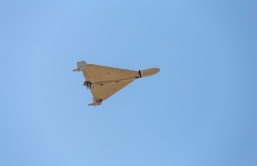Comet ISON is inching closer to Earth and is set to make an appearance in the sky this year, according to Space.com.
It is difficult to tell how bright the comet will be when it arrives, but some astronomers say it can be bright as the full moon or visible during daylight.
Two Russians using a telescope for the International Scientific Optical Network spotted the comet in 2012. According to Space.com, ISON is considered a "sungrazer," meaning is path is extremely close to the sun when it gets into the inner solar system in November.
The comet's closet approach will reportedly take place on Nov. 28, 2013.
Researchers say ISON will pass less than 1.1 million miles (1.8 million kilometers) from the sun's surface. Astronomers are monitoring the comet, and it is currently located just inside the orbit of Jupiter.
"Even from a great distance, the comet does appear bright, making it possible that its nucleus is somewhere between 0.6 miles and 6 miles (1 to 10 kilometers) wide," according to astronomer Matthew Knight of the Lowell Observatory and NASA, Space.com reports.
Astronomers and reporters alike are excited to see this comet in the Earth's skies.
"The most exciting aspect of this new comet concerns its preliminary orbit, which bears a striking resemblance to that of the 'Great Comet of 1680,'" wrote SPACE.com skywatching columnist Joe Rao in a September 2012 article.
"That comet put on a dazzling show; it was glimpsed in daylight and later, as it moved away from the sun, it threw off a brilliantly long tail that stretched up from the western twilight sky after sunset like a narrow searchlight beam for some 70 degrees of arc."
As stated earlier, Comet ISON was first discovered in 2012, about 625 million miles (1 billion km) from Earth in the constellation of Cancer.
To read more about Comet ISON and its route to earth, click here to view the Space.com report.








